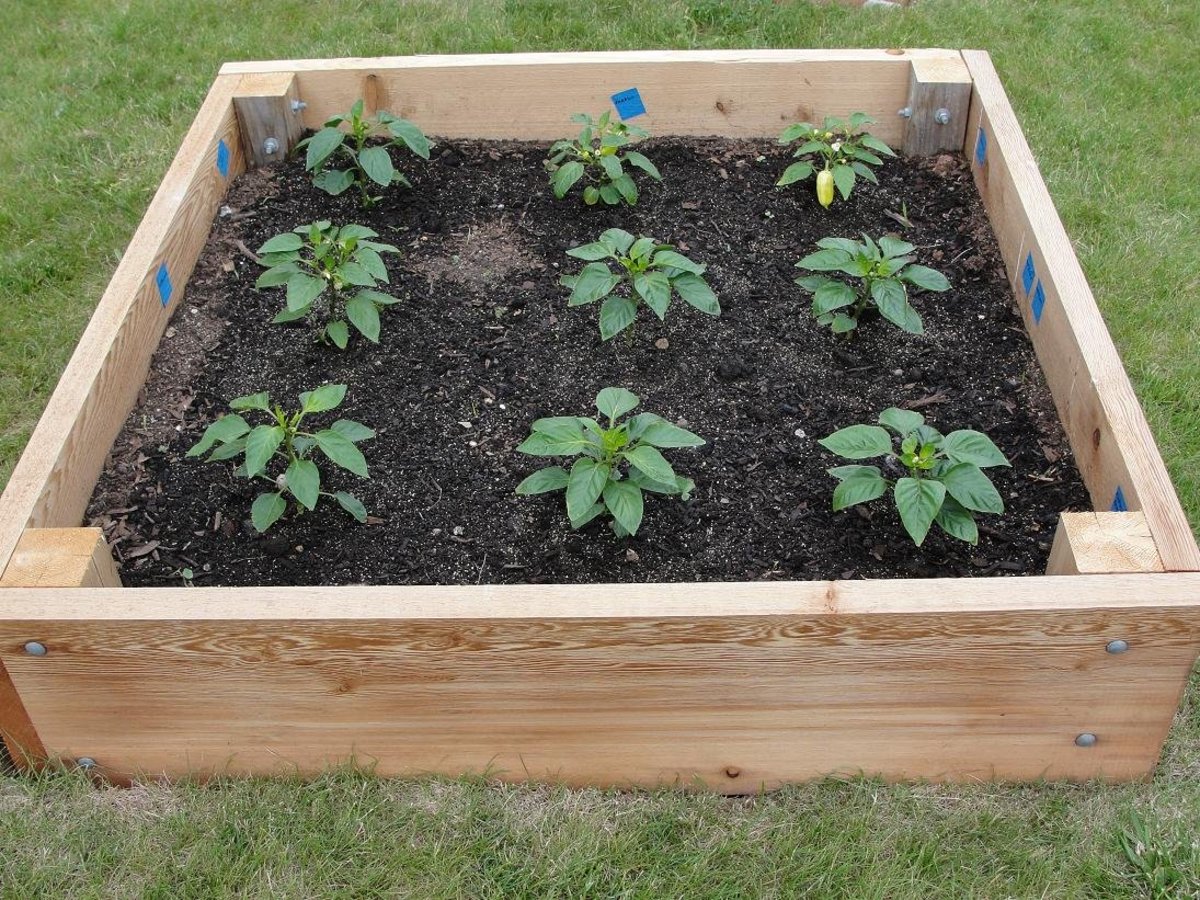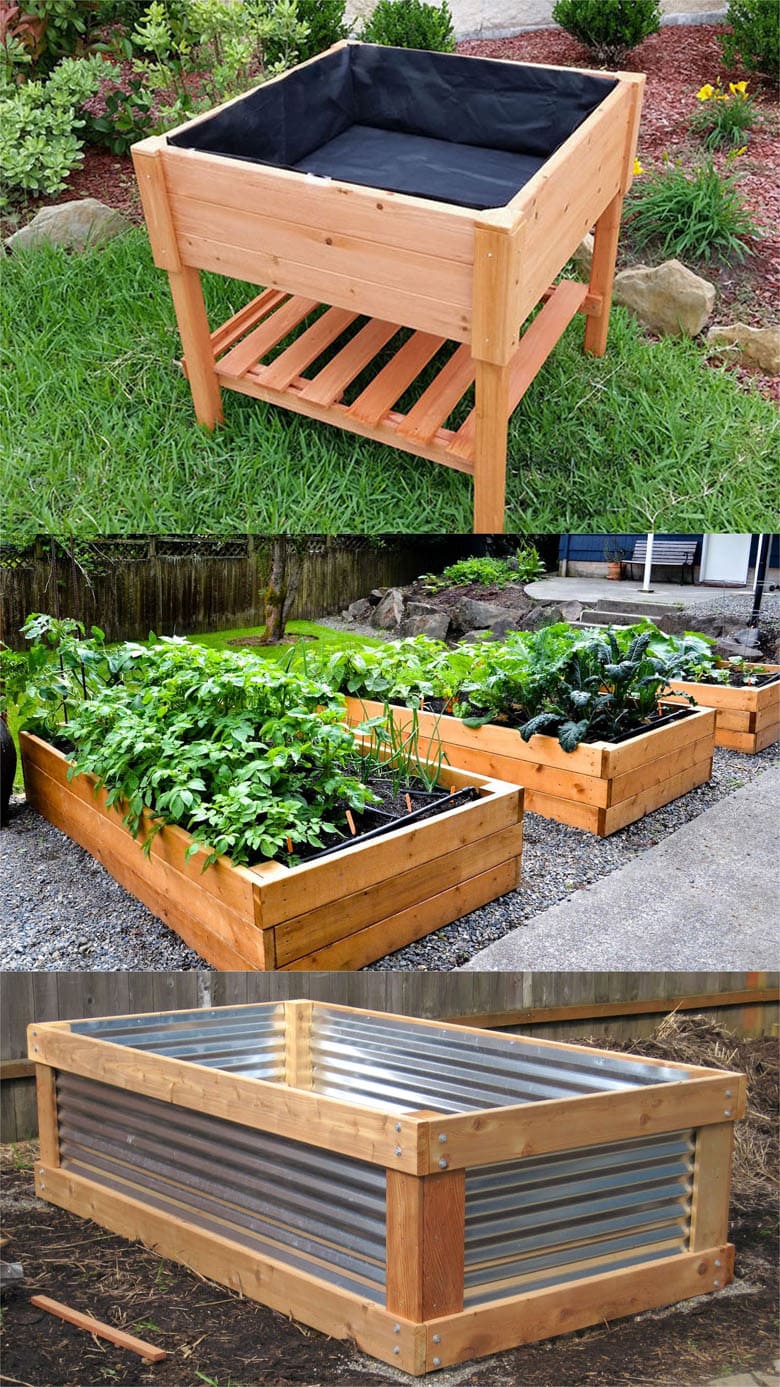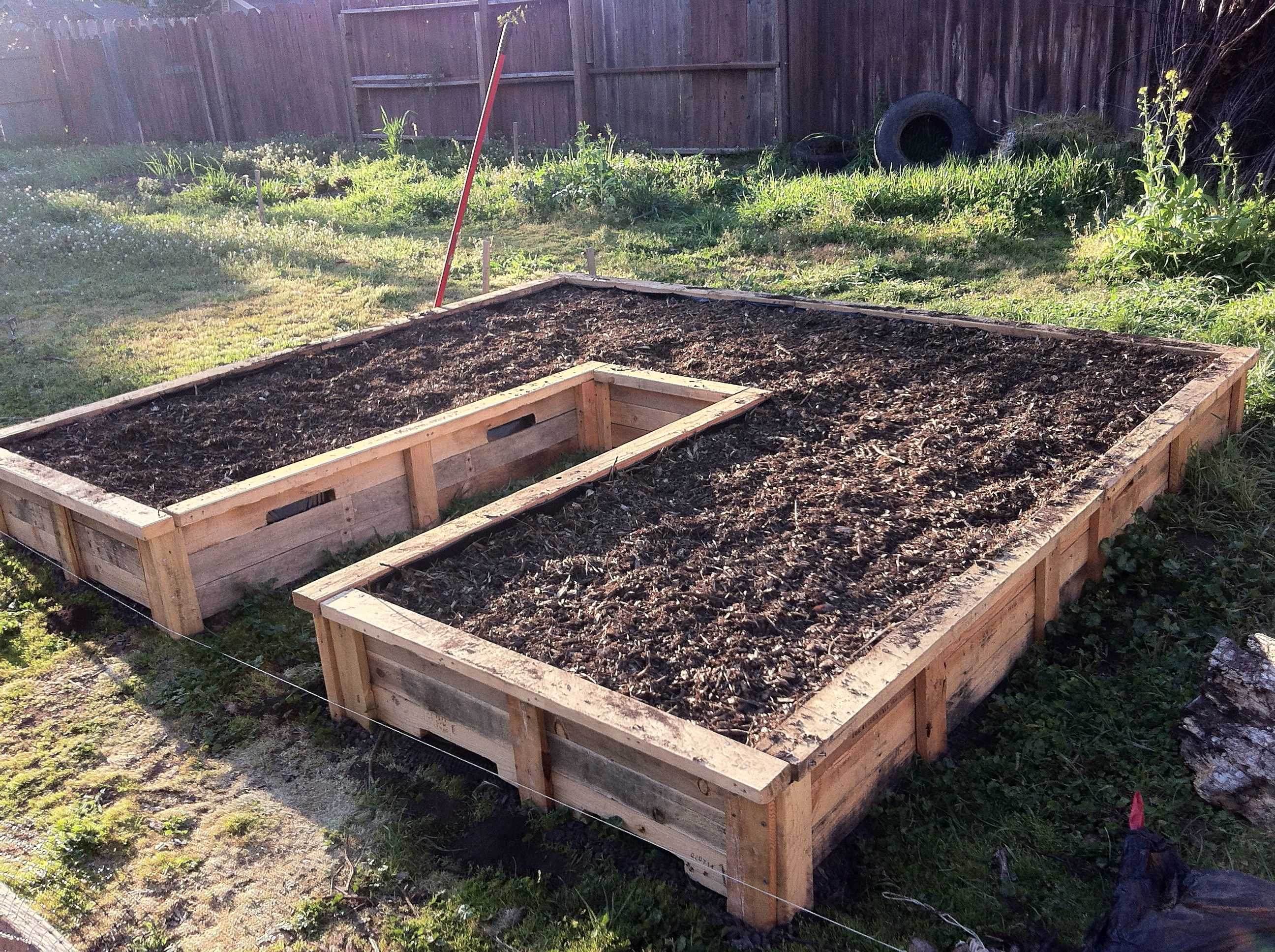Transforming Old Pallets into Thriving Raised Beds
Upcycling wooden pallets into raised bed gardens is a creative and sustainable way to reduce waste and create a unique gardening space. This approach not only helps to minimize the amount of waste sent to landfills but also provides an opportunity to think outside the box and get creative with gardening. Raised bed gardens made from wooden pallets are perfect for gardeners of all levels, from beginners to experienced green thumbs. They offer a cost-effective and space-saving solution for growing a variety of plants, from herbs and vegetables to flowers and succulents.
One of the main benefits of using wooden pallets for raised bed gardens is their availability and affordability. Pallets can often be sourced for free or at a low cost from local businesses, online marketplaces, or community groups. This makes them an attractive option for gardeners on a budget or those looking to reduce their environmental impact. Additionally, wooden pallets can be easily disassembled and reassembled to create a customized raised bed garden that suits your specific needs and space constraints.
Raised bed gardens made from wooden pallets also offer improved soil quality and increased accessibility. The elevated design allows for better drainage and aeration, which can help to prevent waterlogged soil and root rot. This makes them an ideal option for gardeners with mobility issues or those who struggle with bending and kneeling. Furthermore, the wooden pallets can be arranged to create a variety of different layouts and designs, allowing you to customize your garden to suit your personal style and preferences.
When it comes to building a raised bed garden using wooden pallets, the possibilities are endless. With a little creativity and imagination, you can transform old pallets into a thriving and productive garden that provides you with fresh produce and beauty for years to come. Whether you’re a seasoned gardener or just starting out, raised bed gardens made from wooden pallets are a great way to get growing and make a positive impact on the environment.
Choosing the Right Wooden Pallets for Your Garden
When it comes to building a raised bed garden using wooden pallets, selecting the right pallets is crucial for a successful and thriving garden. The size, material, and condition of the pallets can all impact the overall quality and durability of your raised bed garden. In this section, we will discuss the key considerations for choosing the right wooden pallets for your garden.
Pallet size is an important factor to consider when selecting pallets for your raised bed garden. The size of the pallet will determine the size of your raised bed, so it’s essential to choose pallets that are the right size for your space. Standard pallet sizes are typically 40″ x 48″ or 42″ x 42″, but you can also find smaller or larger pallets depending on your needs.
The material of the pallet is also important to consider. Wooden pallets can be made from a variety of materials, including oak, pine, and cedar. Cedar is a popular choice for raised bed gardens because it is naturally resistant to rot and insects. However, it can be more expensive than other options. Pine and oak are also good choices, but they may require more maintenance to prevent rot and insect damage.
The condition of the pallet is also crucial to consider. Look for pallets that are in good condition, with no signs of rot, insect damage, or wear. Avoid pallets that are damaged or have been treated with chemicals, as these can harm your plants. You can often find free or low-cost pallets from local businesses, online marketplaces, or community groups.
When inspecting pallets for quality, look for the following characteristics:
- Sturdy construction: The pallet should be well-built and able to support the weight of the soil and plants.
- No signs of rot or insect damage: Check for any signs of rot, insect damage, or wear on the pallet.
- Smooth surface: The pallet should have a smooth surface to prevent splinters and make it easier to work with.
By considering these factors and choosing the right wooden pallets for your garden, you can create a thriving and productive raised bed garden that will provide you with fresh produce and beauty for years to come.
A Step-by-Step Guide to Building Your Raised Bed Garden
Building a raised bed garden using wooden pallets is a fun and rewarding project that can be completed with a few simple tools and some basic DIY skills. In this section, we will provide a step-by-step guide on how to build a raised bed garden using wooden pallets.
Step 1: Disassemble the Pallets
Begin by disassembling the wooden pallets into individual planks. You will need to remove the nails or screws that hold the pallet together. You can use a hammer or a screwdriver to remove the fasteners.
Step 2: Cut the Planks to Size
Once you have disassembled the pallets, cut the planks to the desired length for your raised bed garden. You can use a saw or a miter saw to cut the planks to size.
Step 3: Assemble the Frame
Assemble the frame of your raised bed garden by screwing the planks together with 2-inch screws. Make sure the corners are secure and the frame is level.
Step 4: Add the Bottom Layer
Add a bottom layer of landscape fabric or weed barrier to prevent weeds from growing up into the raised bed. This will also help to prevent the soil from washing away.
Step 5: Fill with Soil
Fill the raised bed garden with a mix of topsoil, compost, and perlite or vermiculite. This will provide good drainage and aeration for the roots of the plants.
Step 6: Add the Plants
Finally, add the plants of your choice to the raised bed garden. Make sure to leave enough space between each plant for proper growth and air circulation.
Proper Drainage and Aeration
Proper drainage and aeration are crucial for the health and productivity of your raised bed garden. Make sure to add a layer of organic matter such as compost or well-rotted manure to the soil to improve its structure and fertility.
By following these steps, you can create a beautiful and productive raised bed garden using wooden pallets. Remember to always use proper safety precautions when working with power tools and to follow local building codes and regulations.
Designing Your Raised Bed Garden for Optimal Growth
Designing a raised bed garden using wooden pallets requires careful consideration of several factors to ensure optimal growth and productivity. In this section, we will discuss the key elements to consider when designing your raised bed garden, including crop selection, spacing, and layout.
Crop Selection
The type of crops you choose to grow in your raised bed garden will depend on your personal preferences, climate, and available space. Consider growing a mix of annuals and perennials, including vegetables, fruits, herbs, and flowers. Some popular crops for raised bed gardens include tomatoes, peppers, cucumbers, carrots, and lettuce.
Spacing
Proper spacing is crucial for optimal growth and air circulation in your raised bed garden. Leave enough space between each plant to allow for proper growth and air circulation. A general rule of thumb is to leave at least 6-8 inches of space between each plant.
Layout
The layout of your raised bed garden will depend on the type of crops you are growing and the available space. Consider using a square foot gardening layout, which involves dividing the bed into small squares and planting a different crop in each square. This layout is ideal for small spaces and allows for maximum use of space.
Companion Planting
Companion planting is the practice of growing different crops together to improve growth and reduce pests and diseases. Consider planting marigolds with tomatoes to deter nematodes, or basil with peppers to improve flavor and repel pests.
Crop Rotation
Crop rotation is the practice of rotating crops to improve soil fertility and reduce pests and diseases. Consider rotating crops every season to maintain soil health and prevent pests and diseases from building up.
By considering these factors and designing your raised bed garden with optimal growth and productivity in mind, you can create a thriving and productive garden that provides you with fresh produce and beauty for years to come.
Wooden Pallet Raised Bed Gardens: Benefits and Advantages
Using wooden pallets to create raised bed gardens offers a multitude of benefits and advantages for gardeners. In this section, we will explore the benefits of using wooden pallets for raised bed gardens, including improved soil quality, increased accessibility, and enhanced visual appeal.
Improved Soil Quality
Wooden pallet raised bed gardens allow for improved soil quality due to the ability to control the soil composition and drainage. By using a mix of topsoil, compost, and perlite or vermiculite, gardeners can create a well-draining and fertile soil that promotes healthy plant growth.
Increased Accessibility
Wooden pallet raised bed gardens are ideal for gardeners with mobility issues or limited space. The elevated design of the raised bed garden allows for easy access and maintenance, making it perfect for gardeners who struggle with bending or kneeling.
Enhanced Visual Appeal
Wooden pallet raised bed gardens add a unique and rustic touch to any garden or yard. The natural beauty of the wooden pallets creates a visually appealing garden that is perfect for gardeners who want to add a personal touch to their outdoor space.
Benefits for Gardeners with Mobility Issues
Wooden pallet raised bed gardens are particularly beneficial for gardeners with mobility issues. The elevated design and easy access make it possible for gardeners with mobility issues to maintain and enjoy their garden without straining their back or knees.
Benefits for Gardeners with Limited Space
Wooden pallet raised bed gardens are also ideal for gardeners with limited space. The compact design of the raised bed garden allows for maximum use of space, making it perfect for gardeners who have limited room for a traditional garden.
By using wooden pallets to create raised bed gardens, gardeners can enjoy a multitude of benefits and advantages that make gardening easier, more accessible, and more enjoyable.
Common Mistakes to Avoid When Building a Wooden Pallet Raised Bed
When building a raised bed garden using wooden pallets, there are several common mistakes to avoid. In this section, we will identify these mistakes and provide troubleshooting tips and solutions for common issues.
Inadequate Drainage
One of the most common mistakes when building a raised bed garden is inadequate drainage. This can lead to waterlogged soil and root rot, which can be detrimental to plant growth. To avoid this, make sure to include a layer of drainage material, such as gravel or sand, at the bottom of the raised bed.
Insufficient Soil Depth
Another common mistake is insufficient soil depth. Raised bed gardens require a minimum of 6-8 inches of soil depth to allow for proper root growth. Make sure to fill the raised bed with a mix of topsoil, compost, and perlite or vermiculite to provide adequate soil depth.
Poor Pallet Selection
Poor pallet selection can also lead to problems with your raised bed garden. Make sure to choose pallets that are sturdy and in good condition. Avoid pallets that are damaged or have been treated with chemicals, as these can harm your plants.
Troubleshooting Tips and Solutions
If you encounter any issues with your raised bed garden, there are several troubleshooting tips and solutions you can try. For example, if you notice that your plants are not growing well, check the soil pH and adjust it if necessary. If you notice that your raised bed is not draining properly, add more drainage material to the bottom of the bed.
By avoiding these common mistakes and following the troubleshooting tips and solutions outlined in this section, you can create a thriving and productive raised bed garden using wooden pallets.
Adding a Personal Touch to Your Wooden Pallet Raised Bed Garden
Once you have built your raised bed garden using wooden pallets, it’s time to add a personal touch to make it truly unique and special. In this section, we will provide inspiration and ideas for adding a personal touch to your raised bed garden, including decorative planters, trellises, and irrigation systems.
Decorative Planters
Adding decorative planters to your raised bed garden is a great way to add a personal touch and create a visually appealing garden. You can use planters made from a variety of materials, such as terracotta, ceramic, or wood, and choose from a range of styles and designs to suit your taste.
Trellises
Trellises are a great way to add a personal touch to your raised bed garden and provide support for climbing plants. You can use trellises made from a variety of materials, such as wood, metal, or bamboo, and choose from a range of styles and designs to suit your taste.
Irrigation Systems
Adding an irrigation system to your raised bed garden is a great way to make watering easier and more efficient. You can use a variety of irrigation systems, such as drip irrigation or sprinkler systems, and choose from a range of styles and designs to suit your needs.
Other Ideas
There are many other ways to add a personal touch to your raised bed garden, including adding a garden bench, a statue, or a sundial. You can also use a variety of materials, such as stone, brick, or gravel, to create a unique and visually appealing garden.
By adding a personal touch to your raised bed garden, you can create a unique and special space that reflects your personality and style. Whether you choose to add decorative planters, trellises, or irrigation systems, or use other materials and ideas, you can create a garden that is truly one-of-a-kind.
Maintenance and Upkeep for a Thriving Wooden Pallet Raised Bed Garden
Maintaining and caring for a wooden pallet raised bed garden is crucial to ensure a healthy and productive garden. In this section, we will provide guidance on maintaining and caring for your raised bed garden, including tips on soil maintenance, pest control, and seasonal preparation.
Soil Maintenance
Soil maintenance is essential for a thriving raised bed garden. Make sure to check the soil regularly for moisture levels, pH, and nutrient content. Add organic matter such as compost or well-rotted manure to improve soil fertility and structure.
Pest Control
Pest control is another important aspect of maintaining a raised bed garden. Keep an eye out for common pests such as aphids, slugs, and snails, and use organic pest control methods whenever possible. Encourage beneficial insects such as bees and butterflies to visit your garden by planting a diverse range of flowers and herbs.
Seasonal Preparation
Seasonal preparation is crucial for a thriving raised bed garden. Prepare your garden for the changing seasons by adding a layer of mulch or compost to retain moisture and suppress weeds. Prune and train plants to promote healthy growth and prevent disease.
Regular Monitoring and Adaptation
Regular monitoring and adaptation are key to maintaining a healthy and productive raised bed garden. Keep an eye out for signs of disease, pests, and nutrient deficiencies, and take action promptly to prevent problems from escalating. Be prepared to adapt your gardening strategy as needed to respond to changing weather conditions and pest populations.
By following these tips and guidelines, you can maintain and care for your wooden pallet raised bed garden and enjoy a thriving and productive garden for years to come.







